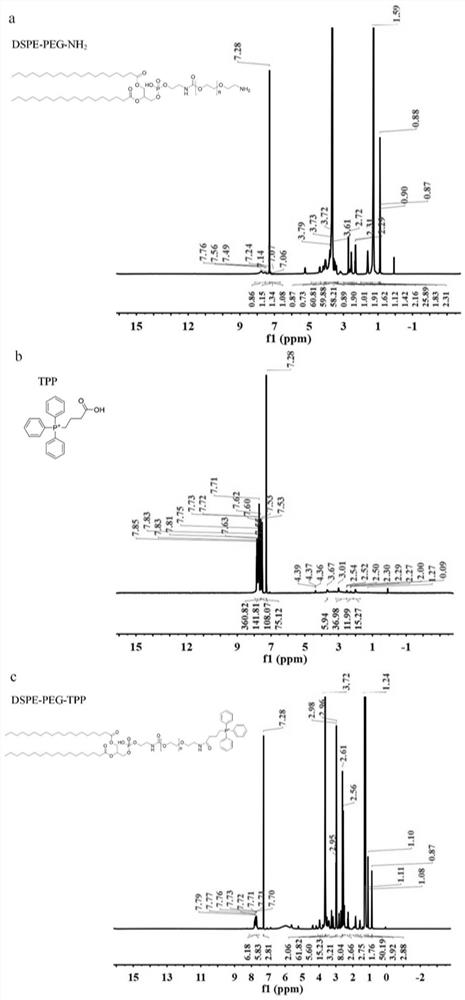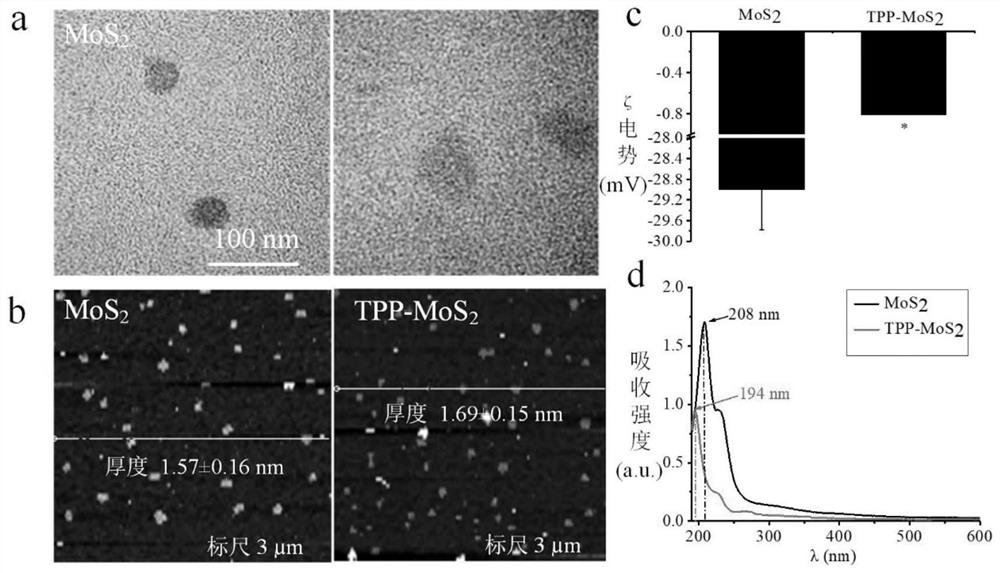Synthesis method of mitochondria-targeting nano triphenylphosphine MoS2 quantum dots
A technology of triphenylphosphine and synthesis method, applied in the direction of nanotechnology, nano-optics, nanotechnology, etc., can solve the problems of poor biocompatibility of drugs, low bioavailability, complex synthesis method, etc., and the method is simple and easy to operate , low-cost effect
- Summary
- Abstract
- Description
- Claims
- Application Information
AI Technical Summary
Problems solved by technology
Method used
Image
Examples
Embodiment
[0030] Example: Synthesis of triphenylphosphine molybdenum disulfide quantum dots and its targeting to the mitochondria of microglial cells, figure 1 Synthesis flow chart of triphenylphosphine molybdenum disulfide quantum dots.
[0031] 1. Synthesis of DSPE-PEG-TPP
[0032] (1) Stirring and mixing: 20 μmol (3-carboxypropyl) triphenylphosphine bromide, 60 μmol N-(3-dimethylaminopropyl)-N-ethyldiimine hydrochloride, 60 μmol N- Hydroxysuccinimide and 20 μl triethylamine were mixed and dissolved in 1 ml chloroform. The mixture was placed on a magnetic stirrer and stirred at room temperature for 2 h at a stirring speed of 1000 rpm. Then 50mg DSPE-PEG-NH 2 Dissolve it in 2ml of chloroform, and stir the mixture of the two at room temperature for 24h at a stirring speed of 1000rpm.
[0033] (2) Vacuum drying: the above mixed solution was vacuum-dried in a vacuum drying oven at 37° C. for 4 hours, and taken out after all the chloroform was volatilized.
[0034] (3) Dialysis: Add h...
PUM
 Login to View More
Login to View More Abstract
Description
Claims
Application Information
 Login to View More
Login to View More - R&D
- Intellectual Property
- Life Sciences
- Materials
- Tech Scout
- Unparalleled Data Quality
- Higher Quality Content
- 60% Fewer Hallucinations
Browse by: Latest US Patents, China's latest patents, Technical Efficacy Thesaurus, Application Domain, Technology Topic, Popular Technical Reports.
© 2025 PatSnap. All rights reserved.Legal|Privacy policy|Modern Slavery Act Transparency Statement|Sitemap|About US| Contact US: help@patsnap.com



